| Revista Umělec 2007/1 >> MORE THAN AUTONOMI LESS THAN INDEPENDENCE | Lista de todas las ediciones | ||||||||||||
|
|||||||||||||
MORE THAN AUTONOMI LESS THAN INDEPENDENCERevista Umělec 2007/101.01.2007 Marko Stamenkovic | theory | en cs de |
|||||||||||||
|
Every attempt to give a possible interpretation of contemporary art practices presupposes a certain context out of which these practices emerge. In the context of globalization today, it is exactly the transnational aspect of cultural production, determined by sound theoretical and political coordinates, that opens up a new discursive matrix for the articulation of meaning and values in the contemporary art world. In this case, there are two precise theoretical and political patterns, pertaining to global capitalism on the one hand, and to the post-socialist (Eastern European) transition, on the other hand, that will be used as interpretive tools. In terms of subject-matter, the Institution of Art, alongside with the dialectics between public and private property (and, consequently, the issue of ownership) will be treated as paradigmatic phenomena within the value-system of the Global Art World.
Speaking about an essential difference between the Eastern artist and the generic type of Western artist in the context of global art markets, the media theorist and professor Boris Groys uses two competitive media that produce value, and explains that the meaning of artworks in the West comes from the outside, i.e. from somebody who is buying these things: their value is produced by money (market), and is fundamentally determined by the intention of the buyer - the works had a meaning but only the one who would buy them would know it. This is a completely neutralized meaning, resulting from extreme atomization, individualism and self-commodification, in terms of commodification of the personality of the artist themself who presents themself as a commodity. Western artists encounter, in fact, a very slippery and open situation which is very market-driven and where every approach is legitimate; they try to avoid every possibility of being ideologically identified, because, according to Groys, people - being compatible with a possible set of expectations and being bought by people who maybe don’t share their attitudes - just don’t want to define themselves in ideological terms. In the East the value is produced by language (ideology), turning the meaning of artworks to the production processes coming from the inside. The meaning in the East is ascribed through a certain producer of value, i.e., the ideological mechanisms of value production. Eastern artists use a strategy that is quite opposite to their fellow colleagues from the West - a strategy of organizing discourse as value. The situation in the East has been determined by a strong value order, but (no matter how deep capitalism intrudes into the body of Eastern Europe), this situation still provides a possibility to connect both value productions, the possibility of interplay between discursive value production and commercialization in both directions: the eastern system, which was almost exclusively a system of discursive value production, is capable of functioning like a kind of machine that turns discursive value production into market value production and also in the opposite direction.(2) The age of global capitalism (and the way one experiences its implications in the field of art and culture today) imposes a crucial question onto all the relevant protagonists taking part in it. The question to be coonsidered is the following: after the transition from state-directed to market-oriented economies had taken place, which model of private support to the arts should be favored by European states? Or, more precisely: once we are determined to work within the new economic environments that are predominantly structured around the idea of corporate capital investments, WHO is supposed to claim the rights over the current cultural development and to take over responsibility for art matters? Being involved in the process of influence of business entities into the world of art and culture, we are supposed to analyze and take a clear position with regard to it. The conditions for production and dissemination of creative and critical ideas related to such a context demand a radically different approach than before. This approach goes towards socially responsible visual and aesthetic practices today, and also – towards a new set of values that are emerging out of the new conditions. Talking about the change, one of the most evident aspects in the reform program of an economy which is changing from a planned to a free market economy is certainly the process of privatization. Privatization is the process of transferring property from public to private ownership. It is also the process of transferring the management of a service or activity from the government to the private sector.(3) This has been the case for all the transitional societies in the years following the demise of totalitarian regimes in the Eastern Europe. Privatization all over Eastern Europe has, just like elsewhere, been subject to the creation of a financial sector and movement from public to private ownership of resources. These changes have resulted in new proprietary relations that offered new models of survival and made new methods of collective action visible. As some theoreticians would claim, “today we can see art projects, exhibitions, etc., that have several owners who establish new proprietary relations that can be seen as the protection of capitalist property rights, which leads to the increasingly privatized ownership of different public projects and exhibitions. (…) Therefore, the power of changing the neo-liberal capitalist system consists of building new cultural and social infrastructures, self-sustained and self-organized micro-systems and political thinking.”(4) In order to conceptualize this intriguing relation, Slovenian theorist Marina Grzinic focuses her attention (and the object of her critique) not onto the institution of the museum as such, but rather – onto the very institution of art as represented and embodied by the public museum, and further - as an institution of hierarchic relations, of stratified power and dynamics, i.e. the institution of (political and financial) power corresponding to the new situation of a contemporary globalized world.(5) The most traumatic point of reference therefore, detected in such a constellation, is (without any doubt) the System of Art and its respective Institutional Hierarchy. It is through the Institution of Art and its power mechanisms that the artists of today articulate their position within the Capitalist Machine. This is one of the reasons why contemporary discourse about art and culture necessarily ends up in the domain of institutional critique. However, such a critique has little to do with the 1960s model of opposition: it is rather the over-identification process that determines the way how this new critique functions, as it proposes various types of cooperation and partnerships with the institutional power centers and implements new ways of civil engagement within the existent structures of institutional hierarchies. It is some kind of a chameleonic collaborative structure that could possibly bring benefits to both parts (without excluding audiences, the third important part in this power-game). Boris Groys names the possibility of such interaction (at least a possibility to convert discursive value production into market value production and back) by the idea of collectivism (group activity). What kind of collectivism is taking place once the idea of capitalism had intervened into the institutional zones of art? Or, more precisely, what social form of organization has become the dominant one with regard to the social and cultural behavior of consumers, where the market is seen as a site of social and cultural events, determined by social campaigning, marketing, and corporate citizenship? What happens when the previous model of the state-owned cultural industries is neither sufficient nor efficient enough anymore, and is being replaced by another model, where art and culture are no longer “owned” by the state, but regulated and subsidized through governmental and trans-governmental economic and legislative functions? This is, of course, a sign of the significant change that came about in most of the former communist countries of Central, Eastern and Southeastern Europe after the fall of the previous regimes. It is an important fact that falls in line with overall processes of democratization through initiatives for regionalization and decentralization in each of those countries. The question around the major factors influencing the model of financing in Southeastern Europe (and particularly the way contemporary art and culture are treated within this model) is one of the most important questions for survival and the future of contemporary cultural practices in the region. Now, that the way for distributing the state budget for the arts is clearly marked by decreasing the state's direct involvement in arts and culture, followed by increasing the indirect support through variety of legislative and other bodies,(6) how are many institutions, groups and individuals supposed to transform themselves into efficient cultural protagonists in the given conditions? This new form of “collective” is, therefore, provoked by the demands which (1) determine the existence, development and programming of cultural institutions in general, and (2) influence the ways in which contemporary art is understood in the decision-making power structures. It also pleads for a more adequate treatment of contemporary art initiatives that put into question the ambiguous relationship between social and economic mechanisms involved in the cultural decision-making processes. This is especially important in relation to the successful partnerships and the new models of cooperation between the public institutions and the private sector, and/or among the public cultural institutions, the interest of the private capital, and the initiative of the civil sector in the art field. Primarily because of the regulatory and legislative changes that need to be introduced and implemented for the benefit of the proper understanding and support of such synergies, it is necessary to provoke a change of attitude towards the organization of these intertwined structures. How then are we supposed to fight for our own independence and not lose our autonomy? What kind of alternative to the governmental involvement with the arts and the cultural sector is possible to propose nowadays? How might these various processes, unified by a single term of reference (i.e. privatization), affect the traditional role of the state, the artists and the cultural institutions (and of the corporate systems prevailing nowadays) towards issues of social responsibility within the evolving economic environment and the marketplace? * * * The driving idea behind the cultural practice of an artistic couple Simona Denicolai and Ivo Provoost (based in Brussels, Belgium) is exactly of this kind: it is based upon the idea of integration, a sort of synergy made possible by various modes of dealing WITHIN the global art system as one is supposed to recognize it today. Using the context of art production and, most evidently, the form of exhibition as a tool to perform the role of cultural investors (where investments are seen as a symbolic act of production of social and cultural values) in the territories strictly preserved for public purposes (such as a museum and its surrounding, a property belonging to the local government, or simply – a public venue not identified with any cultural value whatsoever), they apply the strategy of micro-colonization. The micro-colonization is to be understood here as a pseudo-military intention to temporarily occupy a public space for the benefit of an art concept. The duration of such occupation is limited by the preconceived temporal framework of the exhibition, and is taking place within the spatial structures that allow the exhibition to gain its public visibility. This is a situation that allows a non-institutionalized figure to assume the political role of a temporary governor, while accessing the public area in which it is possible to impose/ exhibit/ made available certain rules applied to the art concept. This is where the institutionalization is taking place: but the institutionalization of “another kind.” A temporary transfer of public assets to private ownership is capable of showing the cracks and gaps existing in the regulated institutional organization, be it a museum, a gallery, real-estate, or a parliament. This is exactly the way capitalism performs its function nowadays in the zones still “contaminated” by the resistance towards the new logic of the market and affected by the regimes of anti-capitalist movements. It calls attention to various step-by-step economic practices (that - in the West - became institutionalized long ago) especially involving the right of individuals and groups of individuals acting as "legal entities" (or corporations) to buy and sell capital goods, as well as land, labor, and money in a free market and relying on the state for the enforcement of private property rights. In order to establish a self-managed autonomous artist residence within a public domain near the existing art center in Pogues-les-Eaux (France), Denicolai and Provoost have proposed a working platform that centers upon the idea of cohabitation allowing a long-term relation between the artists themselves (playing the role of managers) and the art institution (playing the regulatory role of a legal body). Such an extension, managed by the artists and regulated by the institution, is far from a simple public art intervention: it is rather the introduction of an agreement-based logic within the regulatory system of a public entity, the one that eventually challenges strict administrative regulations as they are usually imposed by bureaucratic, precise, and obliging authorship laws. The long-term self-organized intervention by Denicolai and Provoost is an attempt to re-configure the common rules around the principles of ownership, just as much as around the idea of efficiency that is inseparable from the logic of the market. It is, instead of a public art project, rather a (non)private initiative that successfully encompasses the existing gaps among the public, private and civil sectors: while playing according to the rules as imposed by hegemonic power structures, the artists are not going against them, but offer a module for dialogue, for possible inclusion of differently positioned (public and private, corporate and non-corporate, governmental and non-governmental) social activists to take part in the process of transformation, the one that will eventually lead towards a joint platform for communication, exchange of ideas and collective share of knowledge. The artists, having control over the management rights (i.e. the internal state of affairs), while being dependent on the institutional control over the property rights (i.e. the external state of affairs, as legally performed by the local administration), coordinate their activities within the given pattern of regulations, but at the same time – interfere with the system and qualitatively contribute toward a new set of regulatory parameters. This game is instrumental for both structures involved: it allows them to play in-between the existing rules, and also – to benefit from a new social cohesion that involves them in an economic activity that oscillates between the individual and collective types of ownership and decision-making, and still offers the possibilities for regulated teamwork. In the end, every institutional network (as an abstract form of administrative coordination of professional relations, tasks and obligations) is based upon the principles of human networking, inter-personal communication and cooperation. It is, finally, the issue of human capital and inter-personal relations that counts as a primary resource for establishing a proper professional community. The main orientation for the conceptualization of a discourse departing from such principles lies in the following fact: no theoretical platform regarding global capitalism as such could actually escape the fate of being swallowed by its inherent material, its own contents - every discourse attacking the issues of global capitalist affairs is already the consequence and the product of its main target. This is to say that every discourse emerging from the capitalist condition (and especially the one being born in the age of ‘wild, pre-mature’ capitalism, the way one encounters it now in Serbia, for example) is an offspring of its own political, economic and social matrix. The position of a contemporary artist is, therefore, inevitably capitalist. However, what makes such a position authentic does not stem from the general conditions, but rather from methods and strategies artists undertake nowadays in order to question their own point of reference within the given conditions. Their artistic installation on the grounds of a museum could possibly foster the re-distribution and decentralization of institutional power, and accordingly - spread the influence of a public benefit into the local communities. If the ultimate cultural and political task of contemporary art is the one pertaining to the (corporate) social responsibility, then the RESIDENZ stands for the positive example of a sustainable artistic intervention into the disappearing public space today. (1) Boris Groys, “The Other Gaze: Russian Unofficial Art’s View of the Soviet World”, in Postmodernism and the Postsocialist Condition. Politicized Art under Late Socialism, Erjavec, A. (ed.). California University Press, Berkeley 2003, p. 79. (2) “It’s like a Drug Experience”, Interview with Boris Groys, in Kontakt. The Arts and Civil Society Program of Erste Bank Group in Central Europe, No. 3, September 2004, http://kontakt.erstebankgroup.net/magazines/issue3. (3) From Wikipedia, the free encyclopedia: http://en.wikipedia.org/wiki/Privatization. (4) Marina Grzinic, “The Ex-Yugoslav Condition, The Underground and the (Retro) Avant-Garde”, in KONTAKT... Works from the Collection of Erste Bank Group, exh. cat., MUMOK - Museum Moderner Kunst Stiftung Ludwig Wien, Vienna 2006, pp.48-55. (5) Marina Gržinić, “Does Contemporary Art Need Museums Anymore?”, in CIMAM - The International Committee of ICOM - The International Council of Museums of Modern Art Conference, Budapest, 2000. See also: Marina Gržinić, Situated Contemporary Art Practices. Art, Theory and Activism from (the East) of Europe, ZRC Publishing, Revolver - Archiv für aktuelle Kunst, Ljubljana - Frankfurt am Main 2004, pp. 109-123. (6) Varbanova, Lidia. Financing Cultural Practices in South East Europe, a Cultural Policy paper commissioned by Policies for Culture, 2003. www.policiesforculture.org/ dld/PfC_LVarbanova_FinancingSEE.pdf.
01.01.2007
Artículos recomendados
|
|||||||||||||
|
04.02.2020 10:17
Letošní 50. ročník Art Basel přilákal celkem 93 000 návštěvníků a sběratelů z 80 zemí světa. 290 prémiových galerií představilo umělecká díla od počátku 20. století až po současnost. Hlavní sektor přehlídky, tradičně v prvním patře výstavního prostoru, představil 232 předních galerií z celého světa nabízející umění nejvyšší kvality. Veletrh ukázal vzestupný trend prodeje prostřednictvím galerií jak soukromým sbírkám, tak i institucím. Kromě hlavního veletrhu stály za návštěvu i ty přidružené: Volta, Liste a Photo Basel, k tomu doprovodné programy a výstavy v místních institucích, které kvalitou daleko přesahují hranice města tj. Kunsthalle Basel, Kunstmuseum, Tinguely muzeum nebo Fondation Beyeler.
|







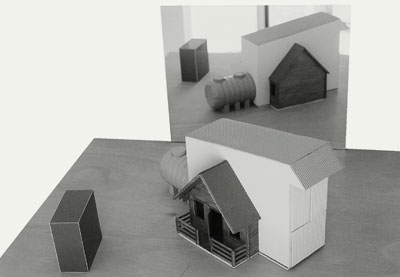







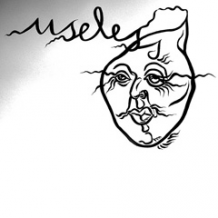











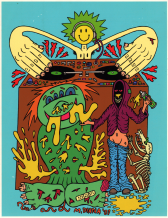
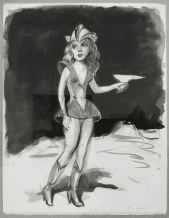
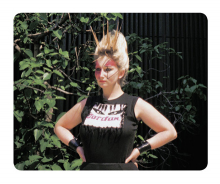
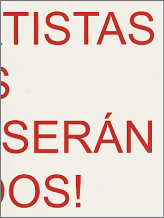


 New book by I.M.Jirous in English at our online bookshop.
New book by I.M.Jirous in English at our online bookshop.
Comentarios
Actualmente no hay comentariosAgregar nuevo comentario